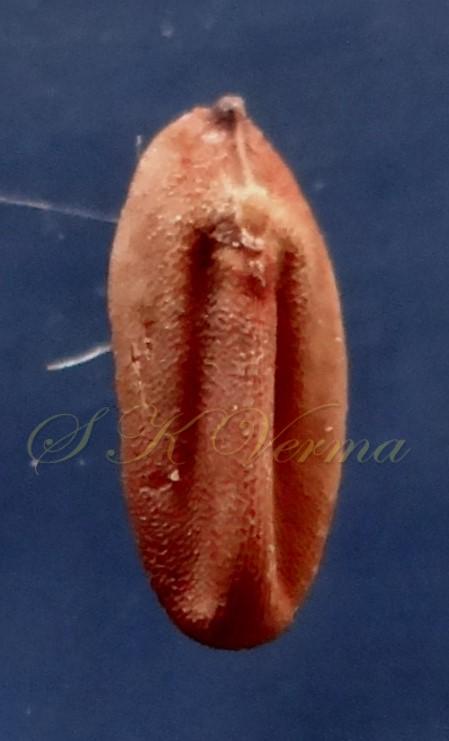PELARGONIUM
Pelargonium
L. Herit. ex Aiton, Hort. Kew. 2: 417. 1789; Knuth in Engl. Pflanzenr. Heft. 53: 316. 1912; L. H. Bailey, Stand. Cyclop. Hort. 5: 2525. 1917; Y. J. Nasir, Fl. Pak. @ eFloras.org p. 41.
Evergreen, perennial rarely with entire leaves. Flowers are showy, mostly in red, orange or white, umbellate, zygomorphic. Posterior sepal prolonged into nectariferous spur. Fruit beaked.
286 species
Pelargonium x hortorum
Pelargonium x hortorum
L. H. Bailey, Stand. Cycl. Hort. 2531. 1916.
Perennial low growing shrub, up to 60 cm tall. Stem erect, succulent, branched, glandular- pubescent. Leaves alternate, simple, stipulate, petiolate; petiole up to 4 cm long, pubescent: long non-glandular and smaller glandular hairs; stipules green, ovate with acute apex, ca. 1 cm x 1 cm, densely pubescent with margin ciliate. Leaf blade simple, orbicular to reniform, 4-7.5 cm long and 6-10 cm in diameter, base cordate, margin hardly lobed and crenate, 5-7 palmately veined, green with brownish circular zone in the middle of leaf, densely pubescent on both surfaces. Inflorescence cymose umbel (with up to 18 flowers), pendulous when young, peduncle glandular pubescent, up to 12 cm long; umbel with an involucre of 5 pinkish, pubescent, entire or lobed bracts. Flowers ca. 4 cm across, zygomorphic, bisexual, 5-merous, hypogynous, red, purple, pink, orange or white; pedicels up to 3 cm long, glandular pubescent. Sepals 5, free, imbricate, densely or sparsely pilose and glandular pubescent on outside with parallel veins prominent adaxially; posterior sepal large, 1.2 cm x 0.5 cm, ovate-lanceolate, not spurred; rest 4 sepals 1 cm x 0.3-0.4 cm, lanceolate, acute. Petals 5, free, scarlet red, glabrous, 2 posterior petals ca. 2.5 cm x 1.8 cm, obovate, narrowed down into 1-2 mm long claw, apex emarginate with dark longitudinal streaks; other 3 petals ca. 2.1 cm x 2.3 cm, obovate to suborbicular, with a short claw, apex round or truncate. Stamens 10, connate at base, ca. 7 mm long; 5 stamens fertile, filaments slender, anthers ca. 2 mm x 1 mm, oblong, red, dorsifixed; alternating with fertile stamens are antherless filaments (staminodes) of unequal lengths. Carpels 5, syncarpous; ovary oblong-ovate, base externally 5-lobed, densely short and long non-glandular pubescent, 5- locular, each loculus with 1 or 2 ovules; styles 5 ( or 1), fused into 1 style, ca. 1 mm long; stigmas 5, linear, ca. 1.5 mm long, red. Fruit 3.7-3.9 cm long, schizocarpic; when ripe, carpels separate from the column resulting in 5 one-seeded mericarps, middle part of carpel, termed ‘awn’ (ca. 1.2 cm long) with long white hairs (5-10 mm long) on inner side 1-2 spirally coiled raising the mericarps; mericarps ca. 6.5 mm x 2 mm, densely hairy outside with 1 longitudinal ridge, on inner side margin pubescent and folded inwards to hold seed, with a basal hairy callus; rostrum ca. 2.7 cm long with stigmatic remains ca. 4 mm long. Seeds large 4-4.5 mm x 2 mm, oblong, brown with a distinct longitudinal ridge on inner surface and obscure reticulation on outer surface.
Common Names: Garden Geranium, Zonal Geranium
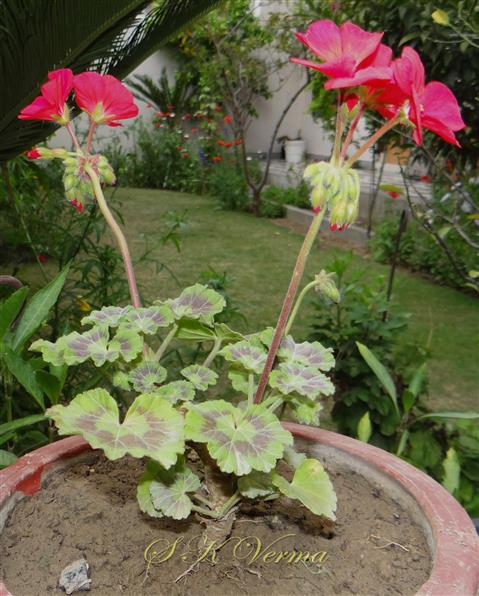
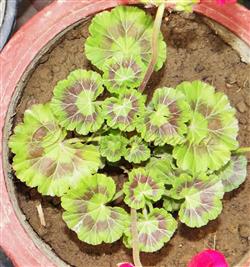
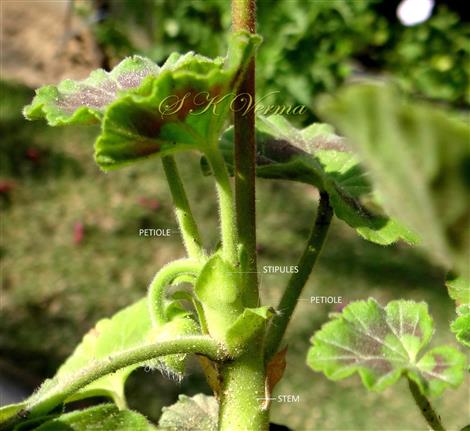
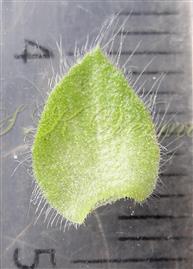
-DSC03273.jpg)
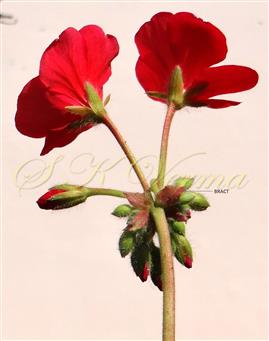
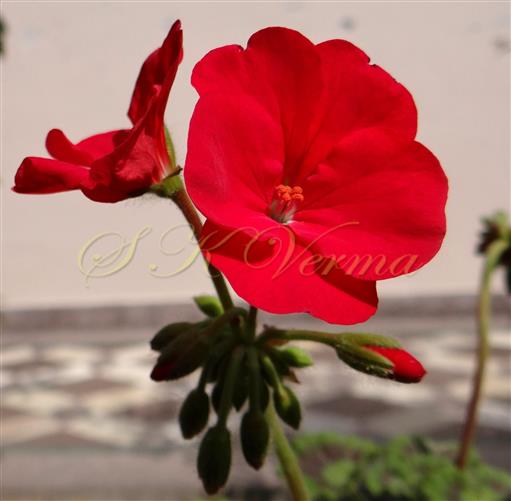
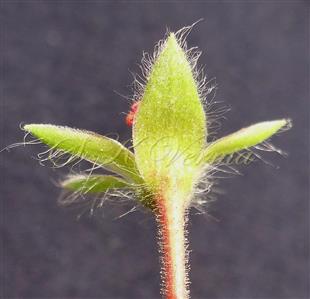
.jpg)
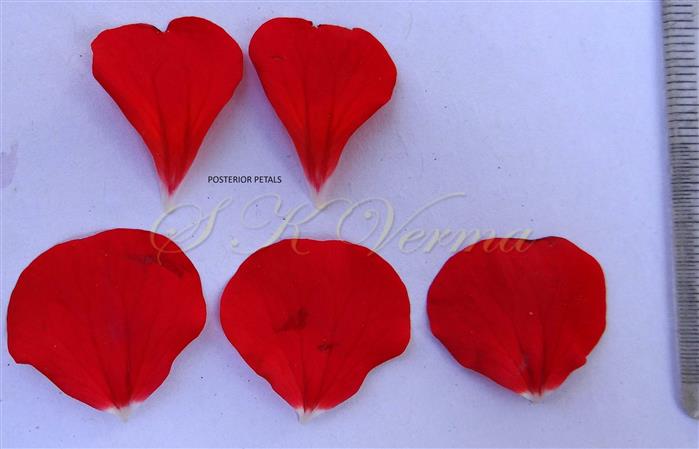
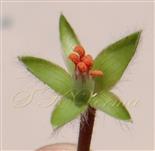
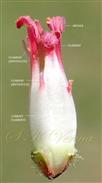
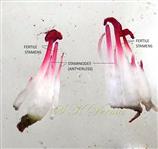

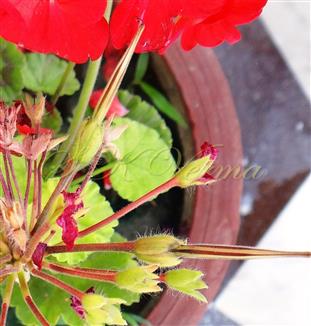
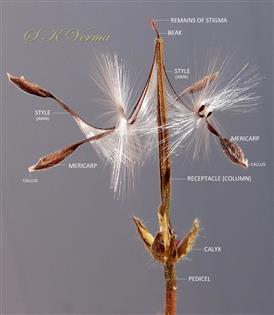
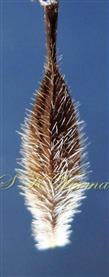
 bearing single mericarp-DSC04698.jpg)
 bearing single mericarp-DSC04725.jpg)






-DSC03273.jpg)



.jpg)








 bearing single mericarp-DSC04698.jpg)
 bearing single mericarp-DSC04725.jpg)
